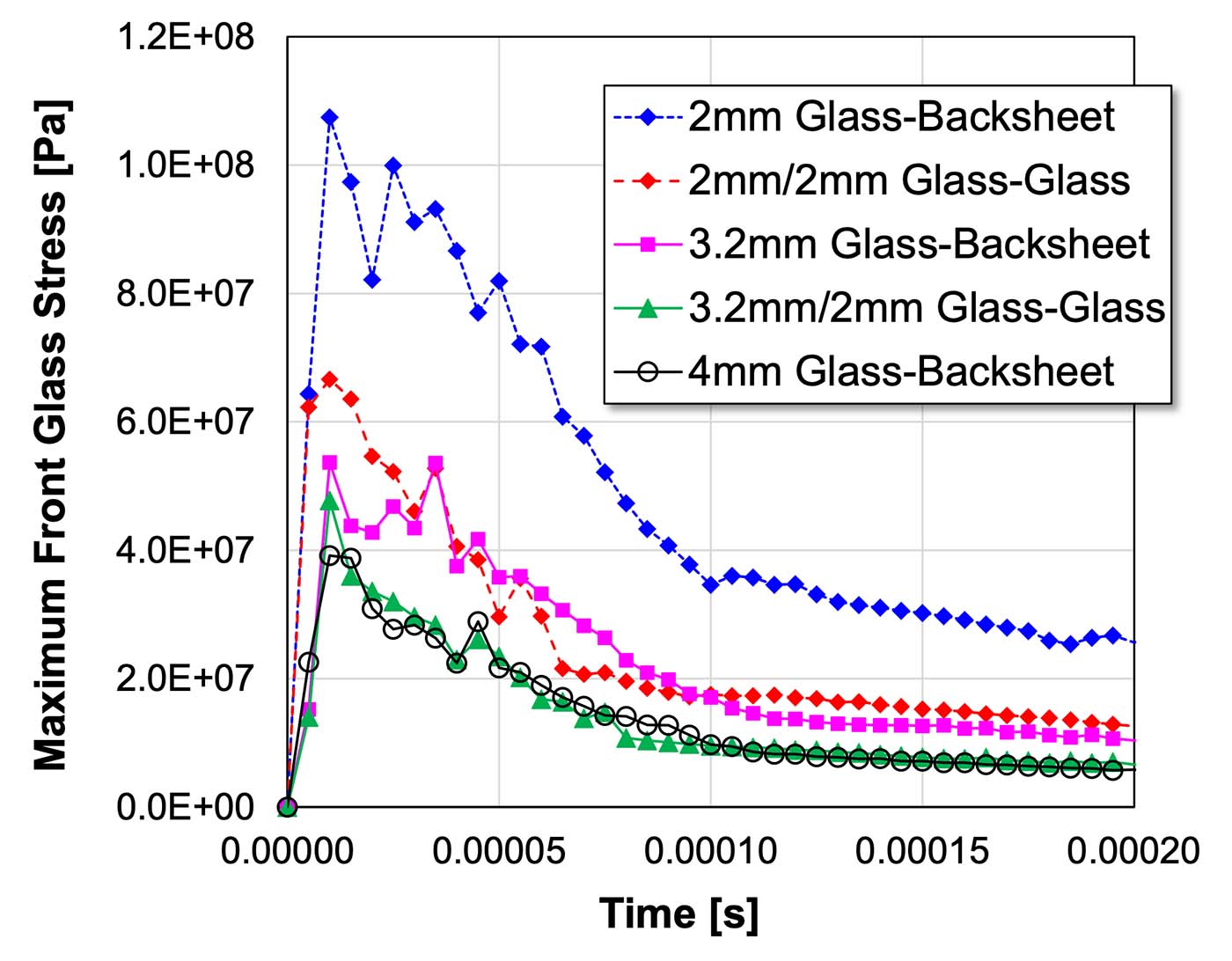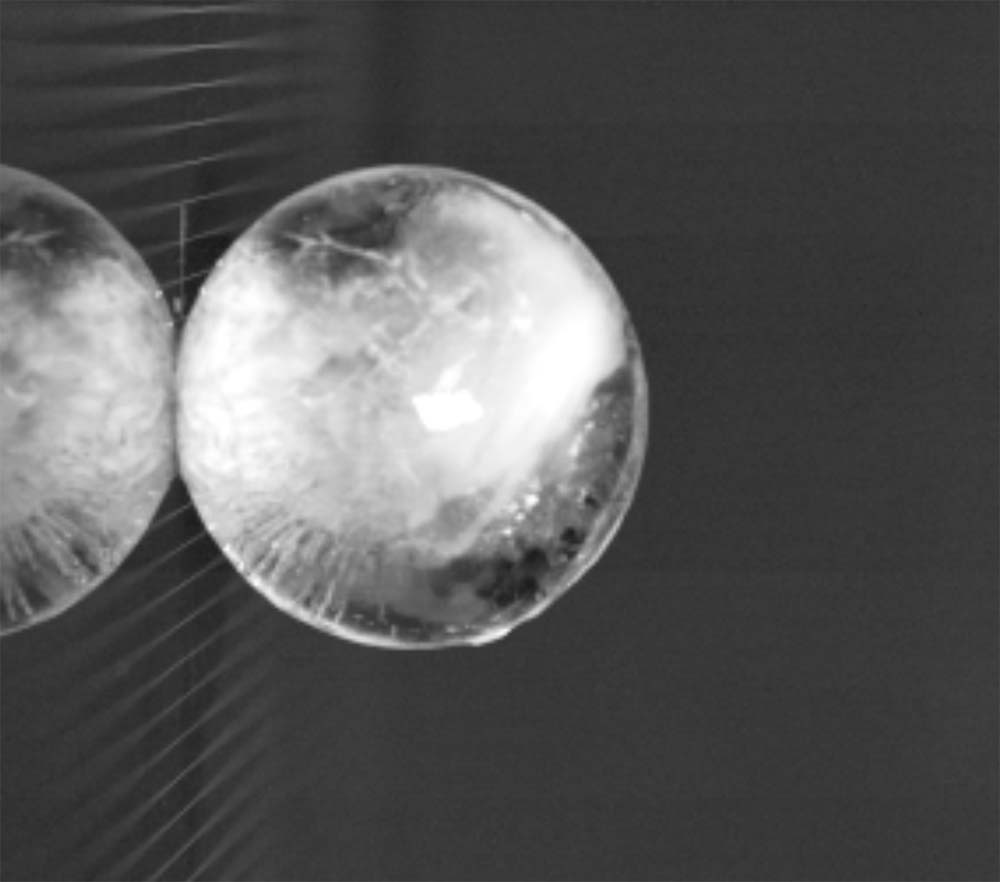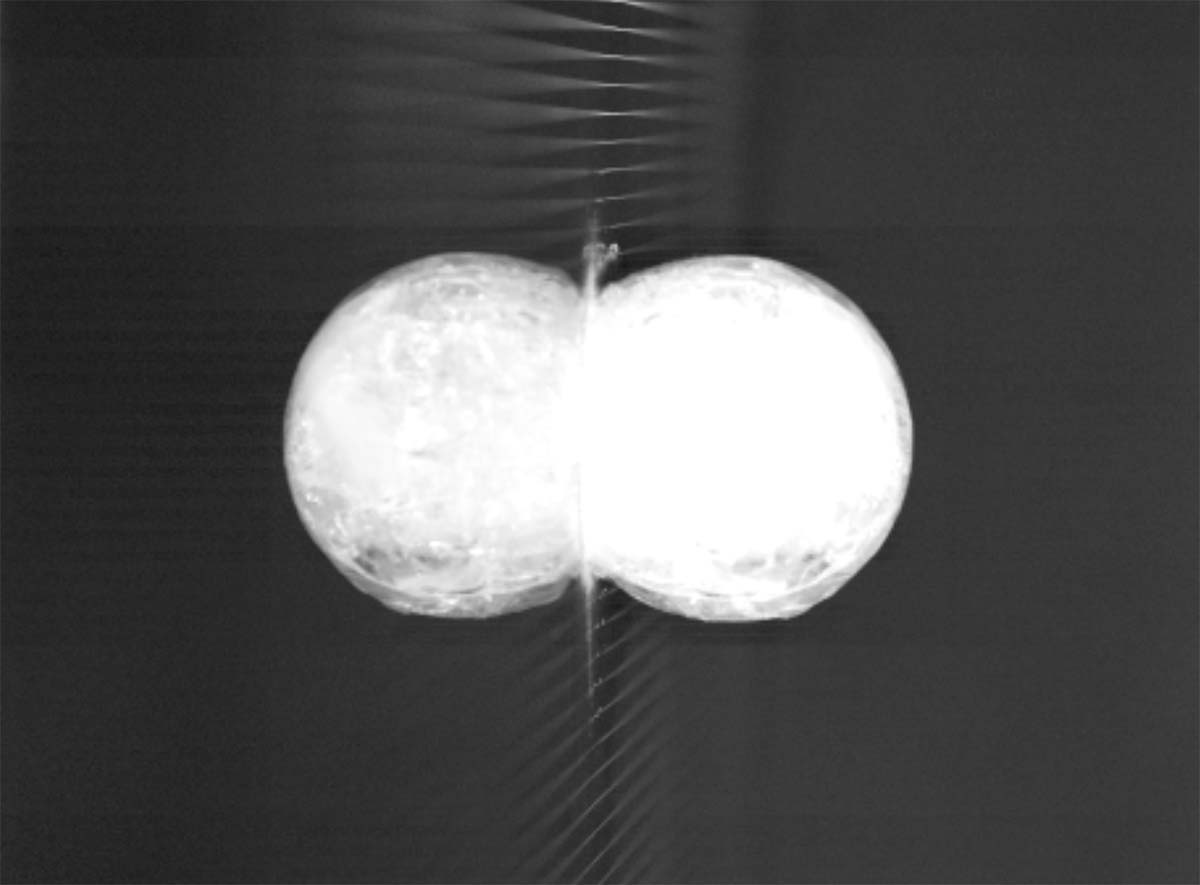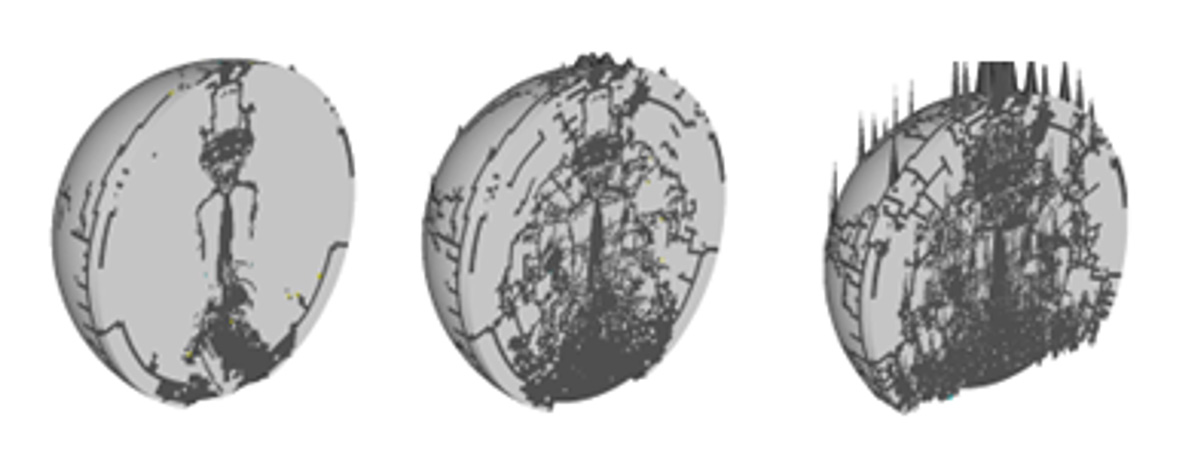Predicting PV Module Hail Resilience Using Computational Simulation
DuraMAT has developed and validated computational simulations of the hail versus the photovoltaic (PV) module impact event, beginning with a high-fidelity material model accounting for ice fracture and breakup behavior, and ending with spatially and temporally resolved distributions of stress development in the module.
Dynamic simulations of hail impacts on PV modules can be used to predict the likelihood of damage as a function of module construction, materials, incident hail size, and impact angle. Large hail events pose a significant threat to PV deployments in many geographical regions. However, it is difficult to quantify module survivability beyond a simplistic pass/fail criterion from physical test sequences. This leaves large uncertainty about the true risk of damage and complicates insurance-related decision-making, in turn raising costs.
By analyzing these internal stressors over the duration of impact, it is possible to predict the likelihood of glass fracture or cell damage and how they change as a function of impacting hail size, angle, or module design.
Core Objective
Multi-Scale, Multi-Physics Model
Team Members
Jennifer Braid and James Hartley, Sandia National Laboratories; and Colin Sillerud, CFV Labs
Impact
These simulations can be used in tandem with meteorological hail risk models to identify whether specific module designs are suitable for deployment at prospective sites, based on the expected annual hail risk and any protective stow capabilities on site. These results may also be used to inform insurance requirements at existing deployments. Additionally, results can be used to accelerate hail-resilient module design by identifying the key sensitivities that affect survivability.
Learn More
Data
Publications
Hartley, James, Michael Shimizu, Jennifer Braid, Ryan Flanagan, and Phillip Reu. 2024. “Measurement of Photovoltaic Module Deformation Dynamics During Hail Impact Using Digital Image Correlation.” IEEE Journal of Photovoltaics 14 (4): 646–651.
Hartley, James, Steven DiGregorio, Jacob Weil, Kevin Zhang, and Jennifer Braid. 2024. “Analyzing Hail Impact-Induced Glass Fracture in Photovoltaic Modules Using High Speed Video and Computational Simulation.” Presented at the 2024 IEEE 52nd Photovoltaic Specialists Conference, Seattle, Washington, 1676–1678.
DiGregorio, Steven, Jennifer Braid, Michael Shimizu, and James Hartley. 2024. “Laboratory Hail Damage of Photovoltaic Modules: Electroluminescence and High-Speed Digital Image Correlation Analysis.” Presented at the 2024 IEEE 52nd Photovoltaic Specialists Conference, Seattle, Washington, 1625–1628.
Contact
To learn more about this project, contact James Hartley, Sandia.

Front glass stress evolution during a simulated hail impact by module construction.



High-speed video with digital image correlation provides model validation data.